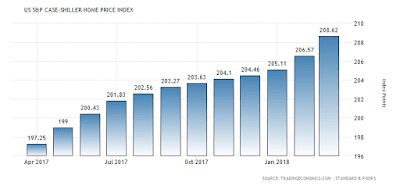
Southern California-based data company CoreLogic released its quarterly National Home Price Index Tuesday and found that San Francisco’s home price bounce since 2017 was the third highest in country.
Over the past two months, sources like the California Association of Realtors and Paragon Real Estate Group peg the median asking price of a San Francisco home at a record $1.6 million, nearly double what it was just five years ago.
So, it’s not surprising that CoreLogic’s Case-Shiller Index indicates an ongoing typhoon of housing expenses too, although the way that the Case-Shiller process calculates value does make for a few extra telling conclusions. Among them:
- The index’s 20-city composite score, which “measures the value of residential real estate in 20 major U.S. metropolitan areas,” was up 6.8 percent year over year in the first quarter. In San Francisco, however, it was 11.3 percent.
- That 11.3 percent appreciation is number three in the nation, behind only Seattle (at 13 percent) and Las Vegas (12.4 percent). SF’s overall index score of 261.8, however, is higher than both of those cities, coming in second only to LA’s highest-in-the-nation score of 278.27. The national score was just 198.94.
- For what it’s worth, SF also had one of the highest price spikes month over month in the index, up 2.1 percent. That’s second behind only Seattle’s 2.8 percent. Month to month comparisons are necessarily more volatile, so their ups and downs are not always that consequential, although the fact that those two cities in particular top the list is hard to ignore in the face of longer term trends.
- Possibly the most important part: Investment site Investopedia notes that the Case-Shiller method measures “the prices of single-family, detached residences” by “[comparing] the sale prices of the same properties over time.” This means that the index excludes almost all of the most recent construction in the city—condos and first-time sellers almost exclusively—and that the price jump reflects what’s happening with longtime SF metro area stock. This is why LA’s overall score beats out the Bay Area’s despite having a lower median price in most other measures.

